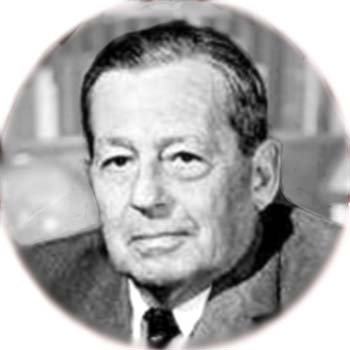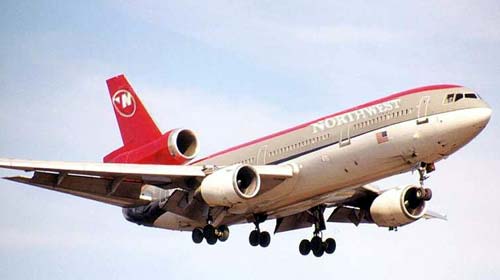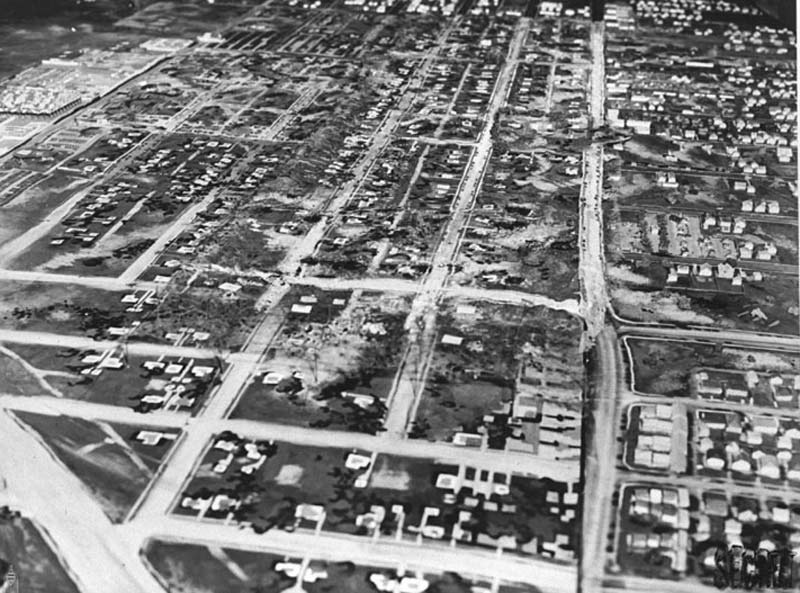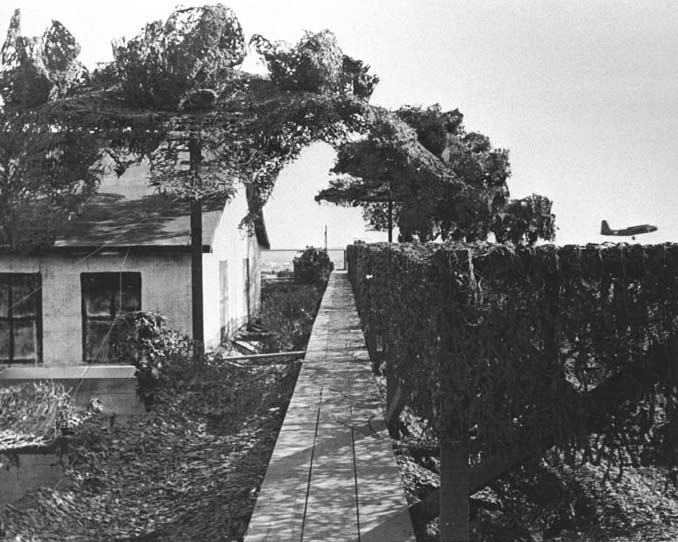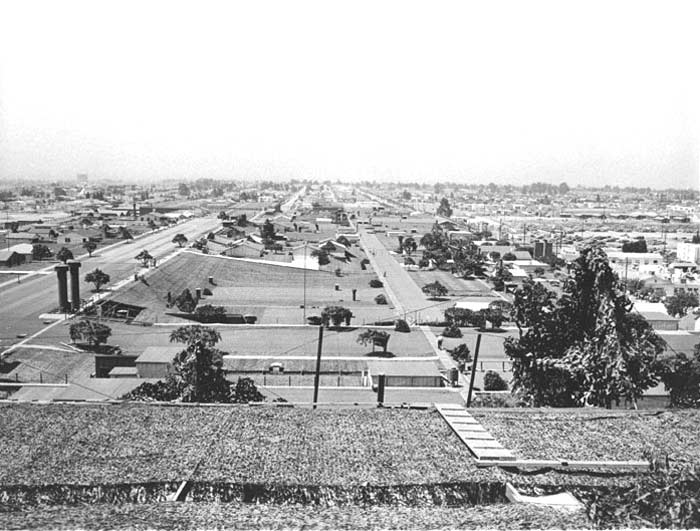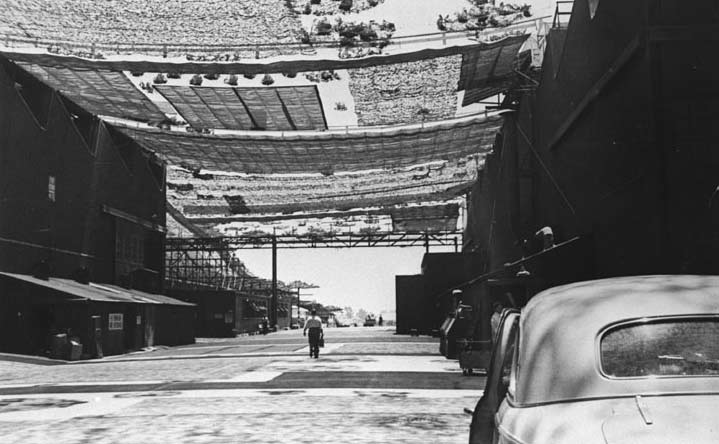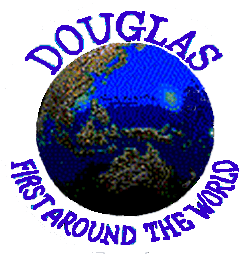Los Angeles Then and Now
Douglas' Dream Took Wing in Santa MonicaI don't have a fear of flying; I have a fear of crashing. - Billy Bob Thornton
Donald Wills Douglas Sr by Cecilia Rasmussen Santa Monica's Museum of Flying, which depicted aviation history for almost three decades, is history itself now, dispossessed by rising insurance costs. As it circles in search of a new landing site in a rural area, it leaves behind its roots in a seaside community that once welcomed an ambitious designer who transformed air travel. Much of the heritage of the museum and the adjacent airport - which is staying put, to many of its neighbours' dismay - is intertwined with aviation pioneer Donald Wills Douglas Sr. More than 80 years ago, Douglas Aircraft Company flew its first plane, ushering Santa Monica into aviation history. Sprawled over more than 200 acres of now-expensive land a short distance from the beach, Santa Monica Airport began as a dirt strip in a barley field in 1919. Howard Hughes and film director Hal Roach used to tie down there. Douglas' dreams took flight there when it became the home of his aircraft plant. DC model planes, military and civilian - up to but not including the DC-10 - were built there. The first around-the-world flight, which was orchestrated by Douglas, took off from and landed there.
DC-10 Douglas, a New York native and graduate of the Massachusetts Institute of Technology, moved to Los Angeles in 1920 to take advantage of its grand flying weather. He had already designed a history-making World War I bomber for Glenn L Martin Company that had sunk two German warships. Now, he was determined to make it on his own in the airplane business. With him in a bucket-seat jalopy for the cross-country drive were his wife, 2 children (the couple eventually had 5), a dog and $600 in cash. Douglas began designing planes in the back room of a barbershop on Pico Boulevard. But times were tough. To help feed his family, he dug up his yard and planted potatoes - which promptly rotted. He resorted to washing cars. Then a wealthy sportsman, David R Davis, heard that Douglas was looking for investors. He put up $40,000, hoping to ride to fame on Douglas' wings. It was to be a short-lived partnership. In 1921, Douglas built his company's first plane, a 2-seat, wood and fabric biplane he called the Cloudster. On 21 February, it became the first aircraft to get off the ground carrying weight exceeding its own. That helped attract the Navy's attention. It agreed to pay Douglas $120,000 for 3 Cloudsters that would be adapted to shoot torpedoes and to land on water. But he needed money to build them. And that's when Davis backed out, apparently because he was tapped out - less than a year after signing on. That left Douglas' fledgling enterprise a bit up in the air. As he struggled mightily to fulfill the Navy contract, Times Publisher Harry Chandler fashioned a parachute. The captain of a newspaper that boosted "air-minded" projects helped raise $15,000 to keep Douglas in business. In 1922, Douglas moved to an abandoned movie studio in Santa Monica and began making military planes. At nearby Clover Field, a 15-acre landing site named for World War I pilot Lt Greayer "Grubby" Clover, Douglas tested his aircraft. On 17 March 1924, he made history when 8 Army airmen took off from Clover Field in 4 single-engine, open-cockpit Douglas World Cruisers. They intended to circle the globe, but stopped by Seattle so they could designate it as their takeoff point. That would trim time off their journey - 2 weeks, as it turned out. The aviators flew into sandstorms, driving rain, Arctic winds and, once, a mountain. Two planes crashed, but no one died. The two remaining aircraft returned to Clover Field 28,945 miles and 175 days later, having gone round the world and sealed Douglas Aircraft's reputation. There were 200,000 people waiting to greet them. Eleven years later, Douglas built the civilian DC (for Douglas Commercial) models, revolutionising air travel as an undertaking for ordinary passengers, not just the daring. The aircraft made its maiden voyage from Santa Monica. Douglas held on through the Depression, expanding Clover Field. But a world war loomed, sending him and his production line into overdrive. By now fiercely competitive with Los Angeles' 7 other major aircraft manufacturers, Douglas was forced to suppress his competitive spirit and play nicely with his competitors. The companies, which included Northrop and Lockheed, were required to combine operations temporarily to meet wartime demand. He hated it, but went along for the duration. "When the dictators are finally bombed off this Earth, we shall become rugged individualists and rivals again," Douglas wrote in a 1942 magazine article. In 1940, as a morale booster for his employees, who were already cranking out warplanes and working round-the-clock shifts, he opened the Aero Theater on Montana Avenue in Santa Monica. He kept it operating at all hours so his workers and the public could enjoy brand new Abbott and Costello comedies and other Hollywood releases. With World War II raging in Europe, Douglas realised well before Pearl Harbor that his plant was a sitting duck for an air attack. He didn't wait for the government to protect him; he took the controls. Douglas asked his chief engineer and test pilot, Frank Collbohm, and a renowned architect, H Roy Kelley, to devise a way to camouflage the plant. (Later, Collbohm would found Rand Corporation and Kelley would design its headquarters.)
The bottom half centre of this photo actually conceals Douglas Aircraft with streets of burlap and trees with chicken-feather leaves. Together with Warner Bros studio set designers, they made the plant and airstrip disappear - at least from the air. Almost 5 million square feet of chicken wire, stretched across 400 tall poles, canopied the terminal, hangars, assorted buildings and parking lots. Atop the mesh stood lightweight wood-frame houses with attached garages, fences, clotheslines, even "trees" made of twisted wire and chicken feathers spray-painted to look like leaves. Tanker trucks spewed green paint on the runway to simulate a field of grass. Streets and sidewalks were painted on the covering to blend into the adjacent Sunset Park neighborhood of modest homes that housed Douglas employees. The tallest hangar was made to look like a gently sloping hillside neighborhood.
A fake house of plywood perched on tall pilings with a walkway across the burlap which covered the aircraft plant below. Designers even matched up the painted streets with real ones. When they were done, the area was so well disguised that pilots had a hard time finding Clover Field. Some of them landed at nearby airstrips instead, protesting that someone had moved the field. Douglas adapted. When planes were due, he stationed men at each end of the runway to wave red flags like matadors. Eventually, the signalmen were replaced with white markers painted on the hillsides. (The facade was such a success that Warner Bros replicated it, fearing that the studio looked like an aircraft plant from the air.)
The street on the left is burlap. The simulated neighborhood became such a part of the community that, when Douglas Aircraft shed its disguise in July 1945, it was as if a landmark had been destroyed. By the early 1960s, Douglas had evolved into a sprawling aerospace company employing 30,000 workers. But the neighborhood was diversifying - and losing its unquestioning acceptance of the industry. Soon, the company found Santa Monica resistant to its expansion plans. Neighbours protested about the noise, and the folks on the LA side of the airport hated the fact that airliners preparing for test flights blew oil and chunks of carbon onto their cars. A few years later, consolidation of the industry would begin. The company merged with a rival to become McDonnell-Douglas Corporation in 1967 and moved to Long Beach in 1976. The 5,000-foot runway at what was by then known as Santa Monica Airport was too short for the firm's growing jet production. Two decades later, McDonnell-Douglas would be absorbed by yet another rival, Boeing Company. When the corporation left town, Douglas' son, Donald Wills Douglas Jr, set up the Donald Douglas Museum and Library to commemorate his father's legacy. Douglas Sr died in 1981. Nine years later, the nonprofit Museum of Flying, founded by golf course and real estate developer David Price, superseded the old museum as part of a $20-million airport overhaul. Exhibits included vintage planes and an immense photo of when the airport and plant operated under cover of camouflage.
After a long day at work - off to the Aero with the family for a bit of Abbott and Costello All that remains of Douglas' operation today are Santa Monica Airport, now used for general aviation; the Aero, struggling to survive an invasion of multiplexes; and Clover Park, which sits atop Douglas' original plant site. Source: www.latimes.com LA Times 4 August 2002 See also:
This GIF was originally created by Don Incoll from Australia (but I remade it)
This message was posted via the Feedback form. Comments: I was a riveter at the Douglas Aircraft Plant northwest of Chicago in 1942. I have read two articles about the history of Douglas Aircraft and there is no mention of the plant in Chicago. Did I dream it? I was what was termed "Rosie the Riveter". I watched the first plane made there fly over the plant. There also was no mention of the use of the C-54 in the Berlin Airlift. I had an opportunity to go aboard a C-54 at an airshow in the Cincinnati area. Just thought you would like to know. Lynn Ashley Lynn You intrigued me, so I looked up what I could find. Have you seen the page located at www.centercomp.com/cgi-bin/dc3/memorial?14518? It says the operation in Chicago was secret and talks about the girls who came up from Oklahoma to get things set up. I also found this:
Source: ohare.bensenville.lib.il.us/orchard.htm And there is a nice photograph here: ohare.bensenville.lib.il.us/images/Douglas%20Field.jpg. (Presidential air transport began in 1944 when a C-54 Skymaster - the "Sacred Cow" - was put into service for President Franklin D Roosevelt.) Thanks sincerely for writing. Very interesting! Regards
To view other articles related to flying including history, unusual flying machines, hot air balloons, skydiving, gliding, problems, airports, turbulence, pilots, crashes, the
Paris Air Show, the future, blimps, space travel, solar sails and more, clicking the "Up" button below takes you to the Table of Contents for this section on Flight. |
 Animals
Animals Animation
Animation Art of Playing Cards
Art of Playing Cards Drugs
Drugs Education
Education Environment
Environment Flying
Flying History
History Humour
Humour Immigration
Immigration Info/Tech
Info/Tech Intellectual/Entertaining
Intellectual/Entertaining Lifestyles
Lifestyles Men
Men Money/Politics/Law
Money/Politics/Law New Jersey
New Jersey Odds and Oddities
Odds and Oddities Older & Under
Older & Under Photography
Photography Prisons
Prisons Relationships
Relationships Science
Science Social/Cultural
Social/Cultural Terrorism
Terrorism Wellington
Wellington Working
Working Zero Return Investment
Zero Return Investment